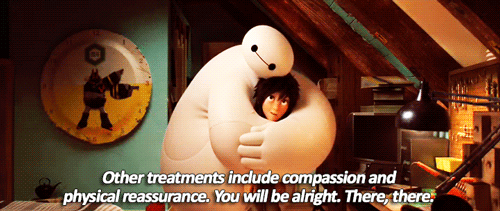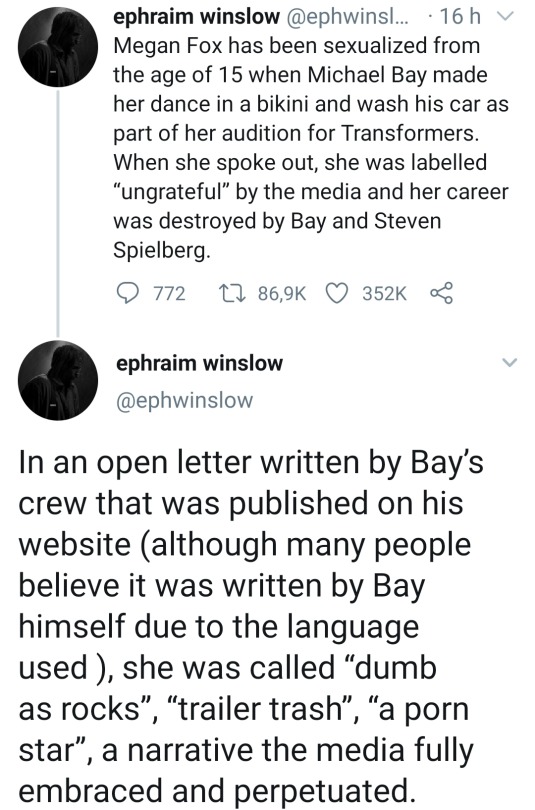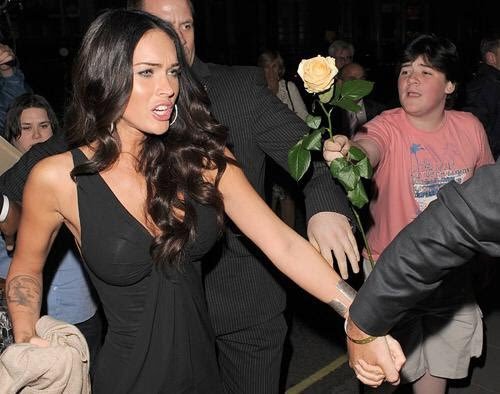Apps For Writers I Wish I Had
Apps For Writers I Wish I Had
So, as a writer who’s more lazy than my cats, I spend many a sleepless night thinking up apps for me to use to make the process much easier. These are a few of those.
One: A app where you can enter a name and click ‘search’ and it will tell you if it’s okay to use in a project. You can specify wether it’s a person name, an establishment name, a place name, etc. to refine your search. A possible name would be ‘Name Check’ or some variant. Two: a face claim app. You can specify the basics of your character and it will pull up pictures/face claims matching the description. Eg. ‘hazel eyes’ ‘black hair’ ‘male’ ‘freckles’ and so on getting more and more specific.
Three: an app for job research. You type in the job you have for your character and it pulls up real life accounts of people with that job. It would explain what the basics are, day to day routine, schooling necessary, hazards, time, etc. Note that this only applies to real life jobs, not fantasy
Four: a music app. You give the browser the themes, feelings, etc. of your project and it pulls up music that fits that. Also can define by genre. Also applicable for characters.
Five: kind of goes along with face claim. A scene reference app. You give the feeling, genre, what you know about it, etc. and it pulls up pictures that match that for you to reference. To see it in front of you.
Six: This one is sort of like three. Need to write a scene you’ve never experienced? This gives you kind of like a guideline Do’s and Don’ts, if you will. Someone who’s experienced it explains(to the best of their abilities) what they were feeling. You have to know your character well enough to change those feelings to fit your character. Not for fantasy. Seven: Character name checking. It’s a fucking pain to have to figure out if this awesome name is available to use in a book or anything that’s going to be written by you. With this, all you have to do is type in the name and if it turns green, it’s safe to use.
More Posts from Ancientbruisesbrokenruses and Others
#writinganactionscenewhenyousuckatwritingaction
Advice for people who are better at writing dialogue than action
As someone who has always been able to spit out witty quotes but couldn’t write a fight scene to save my life, here are some tips that have helped me that I would like to share.

1.) Go bit by bit.
Let’s get the hard one out of the way first. I’m going to use ‘fight scene’ for this example, but it can apply to just about any action scene. Have a starting point and an ending point, then just start writing. So let’s say two characters threaten each other. Okay. One takes a swing. Alright. What next? Maybe another one swings back. What next? First one kicks. Is it appropriate for character 1 to stab character 2 yet? Probably not. What can I do instead? Just work it out one action at a time. If it doesn’t come out the best on paper, who cares? You have a baseline. This isn’t easy and maybe not the best way to do it, but it’s a method I’ve used and it’s better than just saying “They fought until character 2 was stabbed.”

2.) Mix in Dialogue
Just use what you’re good at, fam’. Direct the action with dialogue. If you’re like me and your characters have an affinity for arguing with each other, sometimes their conversation will give you a better idea of what’s going on anyway. I mean, I essentially have a chase scene where one character gets shot and the conversation goes as follows.
*H shoots D*
C: Ooh, bad shot.
J: that’s what you have to say to that?
That’s not a great example, but this is also from a scene I’ve rewritten like ten times.
I mean, also, what about the “turn around slowly” scenes in horror movies?
I also use this sometimes to informally describe how a rock looks like the middle finger or something because the characters think it’s funny. It helps me, at the very least.
Point being, use your characters’ thoughts to give the reader a deeper idea of what’s going on if it’s hard for you to explain it outright.

3.) Write Dialogue First
First go in and write whatever the characters are discussing before going in and filling in the action. Do what you like and feel comfortable doing first, then perfect it later on. If it’s a fight scene, maybe the characters are sharing insults. Write the insults and then conduct the action to fit the rising tension accompanying the verbal insults. Don’t get writers block over the action; save it for when you have the energy.

4.) Just Keep It Simple
As a perfectionist with anxiety, I try to make my first drafts perfect. Spoiler alert: YOUR FIRST DRAFT WILL NEVER BE PERFECT. Life is too short to get upset over your weak action scenes. Write simple sentences and get the basis down. Who cares? Certainly not me at this point. When you go back and edit, then you can flip them around, add color and flavor, and make them come to life. But in the first draft? It’s perfectly okay if your action scene is “He ran towards her. He hugged her. She hugged him. They went home.” Later, you can go in and add things like “They embraced each other, tears in their eyes, never expecting to let go.” It’s okay if you’re not there. One step at a time, fam’.

If anyone else has any suggestions or tips for people who struggle with dialogue, feel free to add! These are just what has helped me through the years.
I’m white. I know that. I don’t pretend I’m not. But gods do I hate that teacher right now. She’s not saying that at she doesn’t like the fact that you like fucking pineapples on your pizza, she’s saying that your ‘opinion’ literally goes against her entire fucking existence.
GO 👏 THE 👏 FUCK 👏 OFF. Also, the American educational system is trash. I applaud this child’s parents for giving her a voice and standing up against bias authority.

Faerie friend of the damselflies. ink and watercolor on paper. there’s tons of damselflies around the stream. It’s very hot out but that doesn’t seem to bother them. hope everyone is staying cool. Instagram | Store
You know, just because you’re white doesn’t mean you can treat people who aren’t as less than human


10 Things I Hate About You (1999) dir. Gil Junger
obsessed with the idea of vampire snow white


colored some doodles
Fantasy Guide to Make-Up and Cosmetics

If I am to be completely honest with you all, I know nothing about make-up. Those little brushes and endless sponges mean nothing to me except the fact that they are really soft and sometimes shiny. I don't wear makeup so you can imagine how useless I am at modern make-up.
However, history is my jam and I know about what make-up they use centuries ago. So never fear @theflyingravenbird I got you.
Ingredients and Applications


Make-up and cosmetics of the past were usually sourced from natural ingredients. The more difficult the ingredients were the more expensive the cosmetic was. Natural dies such as red ochre and berries were used to stain lips or colour powder to use as blusher to add colour to the lips. For examples:
Geishas of Japan are probably the most recognizable make-up wearers in the world. Historically and in some more traditional okiyas, the geishas painted their faces with rice powder to give them that unbroken, white complexion. A popular recipe for their crimson lipsticks involved extracting pigment from crushed safflower petals.
Henna paste made from the eponymous plant can be used as hair dye and to trace designs on the feet and hands.
Kohl is a black powder that is famous for its popularity in Egyptian Cultures and even the Persian Empire. Kohl lines the eyes like modern eyeliners and is found when one grounds stibnite. Kohl actually had the luck of preventing eye infections which no doubt helped in the climate of Egypt and beyond.
The Phoenicians used powdered metals of gold, silver and other metals to dust their faces. This is reputably thought to denote their wealthy status.
Rouge or blusher has had numerous recipes throughout history. The Ancient Egyptians made rouge from red ochre and animal fat. The Romans made their rouge from lead and cinnabar, which sounds about as bad for you as you think it does. The Ancient Greeks made it from pressed mulberries or other fruits such as beet and strawberries. The Ancient Chinese made rouge from extracts of coloured flowers.
Ancient Chinese cultures used a mixture of gumarabic, gelatin, beeswax, and eggs to stain their nails. The colors were often used to denote social class. Gold and silver was worn by royalty or black and red. The lower classes were not prohibited to wear bright colours.
Lipstick has also a few recipes. Egyptians used pounded carmine, a kind of insect, to smear on their lips. Other ancient civilizations used red ochre. Vermilion (though toxic) was also used, along with crushed flowers with red pigment mixed with beeswax during the Elizabethan period.
During the late Elizabeth and then again in the Baroque period, women and some men began to paint their faces with white powder. The layer of white lead and vinegar, or ceruse was popular for tears despite the hair loss and death it caused.
Make Up Tools

Powderpuffs: the powderpuff was a pad of soft material meant to apply powder to one's face. They were made of feathers, cotton or sheep's fleece.
Brushes: Brushes have been been around for ever. They have been found in some of the earliest Egyptian tombs. The brushes were often made from animal hair with wooden or more expensive handles.
Pots of pigment, scents and ointments: Some early tombs excavated from ancient civilizations have included what amounts to a palette (thank you lil sis for that word). The pigments in the pots would be very expensive. Ointments and balms have also been found. Perfumes were very popular in antiquity and made a recurrence in Europe after the Crusades (which helped since some of the make up smelled awful).
Make Up and Social standing


Though make up is rather popular now, it had a rather uncertain rise to popularity.
Most Ancient civilizations wore some kind of cosmetic. The overuse of cosmetics in ancient times was frowned on as prostitutes and actors often wore dramatic make up however the elite often smeared themselves with powders to make them paler and redden their cheeks.
In the Middle Ages, makeup had a dual reputation. The Church frowned on it because it was again popular with prostitutes and actors but it was a common consensus that if the woman was scarred from smallpox or some other disease she was excused from being labelled as vain.
In the late Elizabethan period, theatres were getting more popular and as was makeup. Actors began wearing make up more frequently as did the elite. Elizabeth I herself was infamous for her milk-white skin. Make up became more sociably acceptable among the rich and noble at this point.
The 1700s probably saw the height of make up madness. Both women and men of the elite powdered themselves with white lead paint. They rouged their cheeks to high pigment and stuck small dots of felt to cover blemishes. The commons began to poke fun at the elite's strange obsession with looking like they've lost all their blood. Dandies and painted noblewomen were often poked fun at by pamphlets and satirical cartoons.
The Victorians frowned on make up, thinking it garish and common. Queen Victoria herself denounced make up as uncouth which lead the elite to abandon it in droves. However, most women prized a clear complexion so there was a lot of secret make-up-ing going on.
During the Edwardian period and the 1920s, make up began to get more popular. Older more respectable women began trying makeup to fresh their complexion. The younger generations began to experiment with makeup leading to the infamous smokey eye look.
This has made me think so much…and not entirely about my characters.
Writing Grief
I’ve heard from many places - and wholeheartedly stand by - the idea that the larger the scope you’re trying to portray, the smaller your focus should be. For example, if you’re writing about a village that’s been destroyed, you don’t focus on the destruction everywhere, you focus on a little child’s doll lying half-scorched in the street. The idea is to channel as much of the emotion as possible into the smallest details. That’s how it’s the most potent.
Grief is one of these big things. Grief rocks your world, and it’s grip doesn’t go away as soon as the next thing comes around. It strikes at odd moments.
The thing with grief is that everyone experiences it differently, and everyone’s got different memories surrounding it. Given this fact, I’m going to describe questions who’s answers you may incorporate into your narrative, but I cannot give you a “this is how to write your character’s grieving.” The questions I’ve listed below are likely going to be most relevant at or just after another character’s died, when things are freshest and at their most raw.
(note: “or” questions do not necessarily mean you have to choose one or the other. You can, but it’s also saying, “is at least one of these the case?”)
How does it feel externally?
Do things feel too rough, or too soft? Too squishy or too unyielding?
Are yoru character’s sleeves damp or wet from wiping away tears? are there balls of tissues held tight in your character’s fists?
Is the air too cold or too warm?
Is the space too tight, or too open?
How does it feel physically internally?
Is your character’s jaw clenched or their muscles tightened?
Do their eyes sting or feel puffy from tears?
Are they dehydrated and/or hungry?
Does their skin feel cold to the touch?
Do they crave physical contact such as hugs, or do they not want to be touched?
How does your character feel emotionally?
Are they angry, scared, sad, or unsure?
Do they feel emotionally empty like there is nothing inside of them (do they feel cold but aren’t physically cold)?
Are their thoughts coherant, or are they scattered?
What do they notice? Colors, shapes, patterns, sounds, movement, tactile sensations, smells?
Is your character craving a sense or normalcy, or a sense of difference that reflects the difference of someone dying?
How does your character physically react?
Do they start crying or showing other intense emotions?
Do they try to hold everything inside and/or not show other people?
Does their movement style change (they’re jerkier, slower, etc)?
Do they not seem to hear anything anyone else is saying?
Do they try to overcompensate and/or pretend that what happened didn’t really matter (showing intense emotions seemingly unrelated to grief)?









A career for a career - Megan Fox deserves to have hers back. Michael Bay deserves to be blacklisted, something he had no problem doing to her when she exposed him for his awful, predatory behavior.
I’m tempted to say Ash but I don’t know. He’s supposed to be more soft but I love it when the soft one has repressed anger. Even though it’s a sort of over done trope. But I digress. The theme really makes it possible for all of them to have repressed anger. Though I think Ash would be the one who doesn’t realise it the most.
tag the oc who has a lot of repressed anger and doesn’t realize it yet
-
 ancientbruisesbrokenruses reblogged this · 4 years ago
ancientbruisesbrokenruses reblogged this · 4 years ago -
 ancientbruisesbrokenruses reblogged this · 4 years ago
ancientbruisesbrokenruses reblogged this · 4 years ago -
 ancientbruisesbrokenruses liked this · 4 years ago
ancientbruisesbrokenruses liked this · 4 years ago -
 ancientbruisesbrokenruses reblogged this · 4 years ago
ancientbruisesbrokenruses reblogged this · 4 years ago